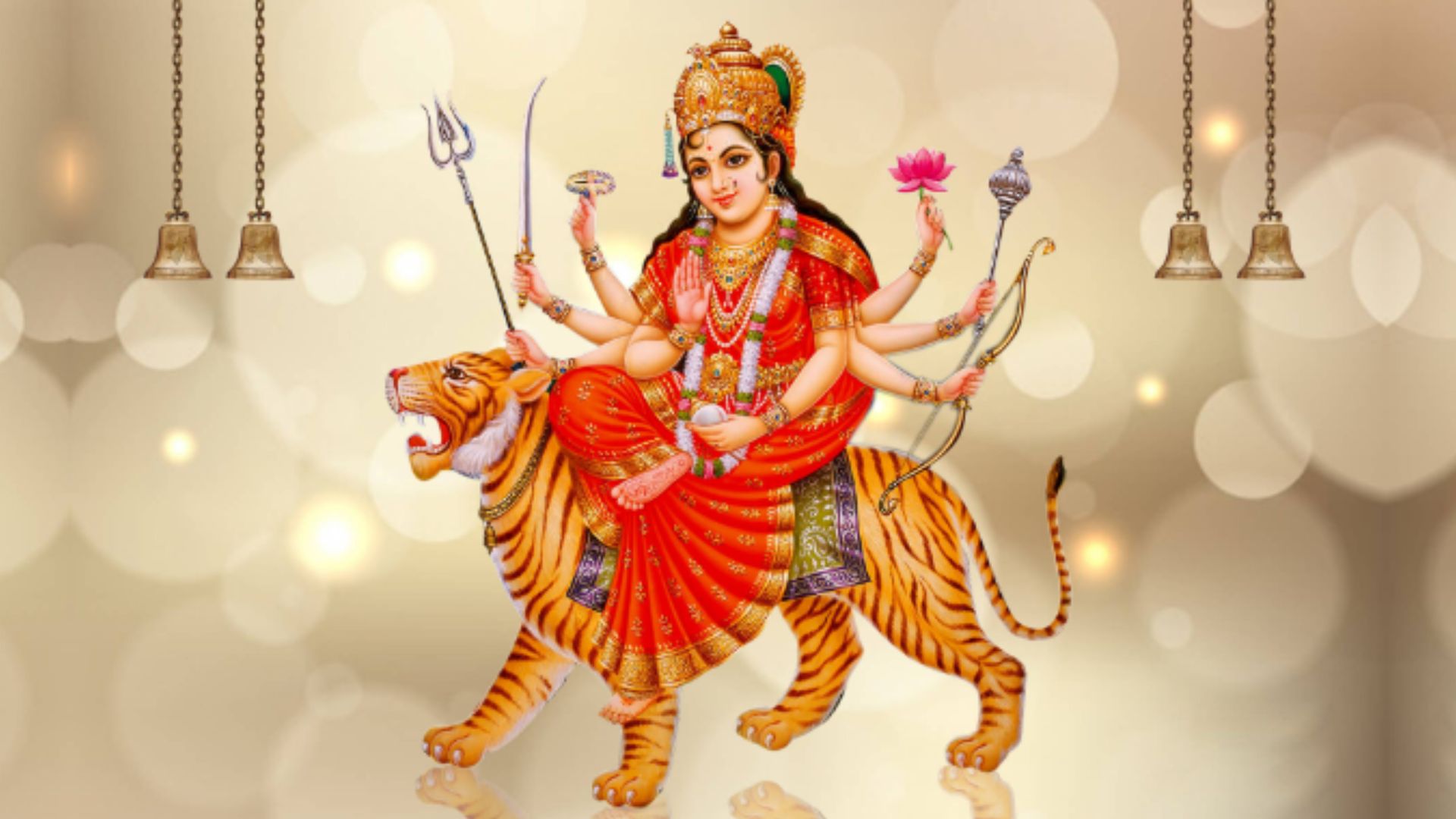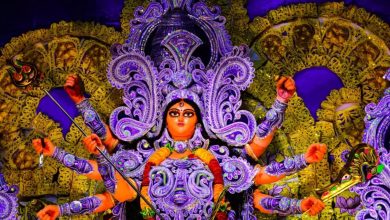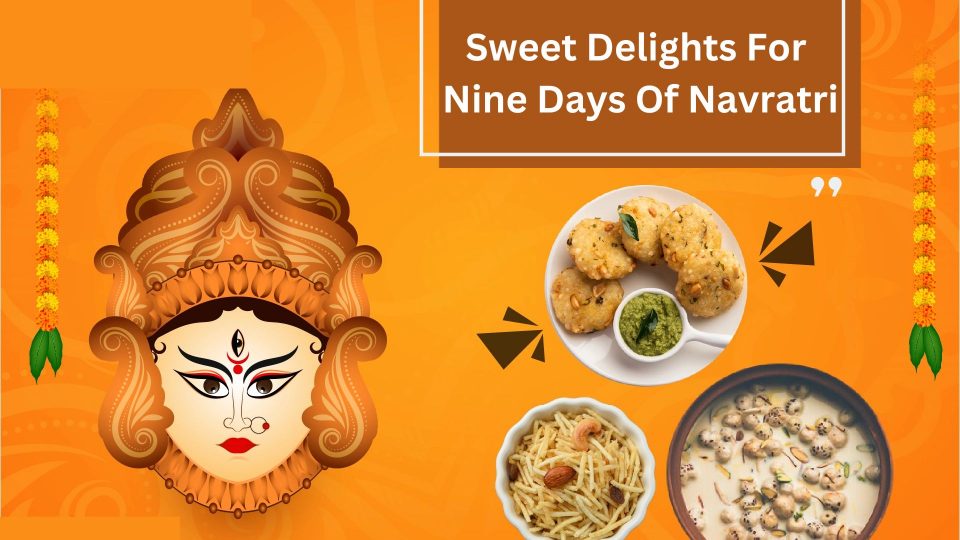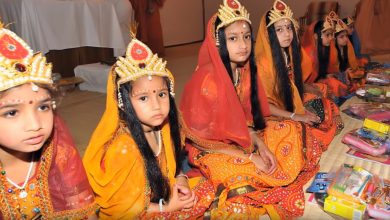Navratri is a festival of happiness and devotion and is dedicated to Devi Durga, the goddess of power and strength. The event lasts nine days, representing the goddess’s nine manifestations, also known as Navdurga. The event gets its name from the Sanskrit words “Nava” for nine and “Ratri” for the night.
Hindus celebrate Navratri by honouring the pure feminine spirit of the universe, the mother goddess Durga. It is believed that the goddess Durga is the symbol of creation, preservation, and destruction. By invoking her, devotees seek her blessings, protection, and grace.
The festival symbolizes grand celebrations, beautiful decorations, and various traditional rituals. People pray, fast, and show their devotion. In certain areas, Navratri is celebrated with Garba and Dandiya, traditional folk dances that commemorate the victory of good over evil.
This blog will look at the significance of Navratri and its numerous components, such as its history and mythology, as well as traditional rituals and activities. We intend to give a detailed guide to assist you in understanding and appreciating the core of this auspicious celebration, which has significant cultural and spiritual importance.
Importance Of Navratri 2024

Navratri is a nine-night festival with profound spiritual significance. The festival takes its name from two Sanskrit words that indicate “nine nights,” and it provides believers with an opportunity to practice spiritual disciplines like fasting, meditation, and prayer. This event provides an opportunity for individuals to rest, refuel, and rejuvenate.
The festival of Navratri is related to the mythology of the goddess Durga, who fought the monster Mahishasur for nine days before triumphing on the tenth day, known as Vijayadashami. The event represents the celebration of optimism over negativity.
It encourages individuals to rid themselves of negativity such as hatred, envy, wrath, greed, and violence to become better human beings to achieve inner peace and happiness.
On Navratri, Hindus worship Durga, also known as Devi or Shakti, the divine feminine element. The three parts of nature are represented by Durga, Lakshmi, and Saraswati, with the first three days of Navratri dedicated to Durga, the next three to Lakshmi, and the last three to Saraswati. Vijayadashami represents victory over these three aspects of life.
Apart from its spiritual significance, Navratri is also a time for socializing, dressing up in traditional clothes, attending cultural events, and feasting great food. The event is celebrated with tremendous zeal and dedication throughout India, with each area having its distinctive method of doing it.
When Do We Celebrate Navratri?
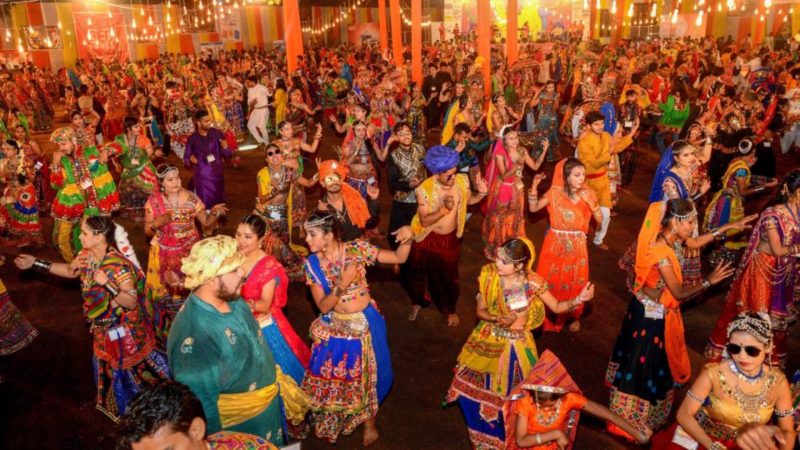
According to Hindu scriptures, Navratri happens four times a year, with Sharada Navratri and Chaitra Navratri being the most prominent.
Sharada Navratri is the most popular Navratri and is held at the fall equinox, generally in September or October. It is also known as Maha Navratri or Devi Navratri, and it is a festival dedicated to the worship of the goddess Durga. The festival lasts nine nights and ten days, culminating with the celebration of Dussehra, also known as Vijayadashami, which represents the triumph of virtue over evil.
Chaitra Navratri, on the other hand, is the second most popular Navratri and comes around the spring equinox, generally in March or April. It is also known as Vasant Navratri and is dedicated to the goddess Shakti’s adoration. The event lasts nine nights and ten days and finishes with the Ram Navami celebration, which commemorates the birth of Lord Rama, an avatar of Lord Vishnu.
Devotees fast and perform several rituals to seek the goddess’ blessings during both Sharada Navratri and Chaitra Navratri. The event is widely celebrated throughout India and other areas of the world with great zeal and enthusiasm.
Traditional dance styles like Garba and Dandiya are performed in groups with colourful dresses and traditional music as part of the celebrations. The celebration also includes flower and light decorations for residences and temples. Navratri is an important Hindu holiday with tremendous cultural and spiritual importance. The celebration allows people to connect with the almighty and ask for blessings for a rich and meaningful life and inner peace and happiness.
Also Read: Navratri Kanjak Puja: Importance and How To Do It?
How To Celebrate Navratri?
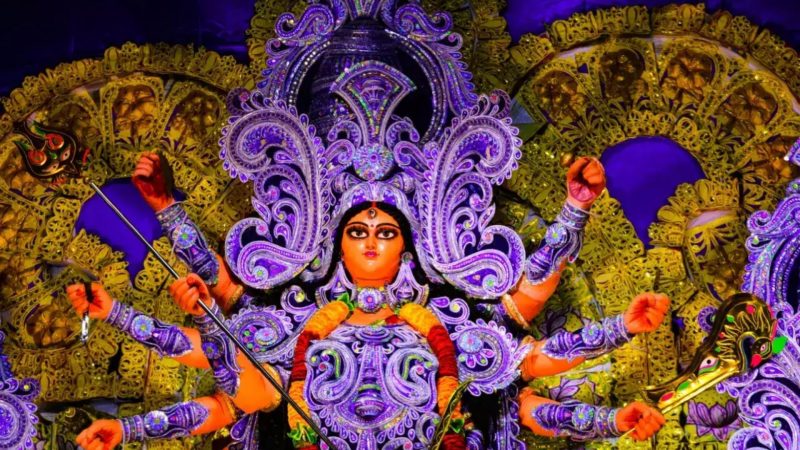
The festival of devotion Navratri honours the divine feminine force of the universe Maa Durga. In India, the festival lasts nine days and is a time of immense joy and happiness.
At this time, believers perform a variety of rituals and customs to honour the goddess and seek her blessings. Some of the prominent ways devotees display their love for their chosen goddess include chanting holy hymns, dancing to the rhythms of garba and dandiya, and attending Jagrans.
The younger generation needs to understand the significance of Navratri and its traditions to preserve the rich Indian culture for future generations. The festival’s meaning and rituals are passed on by passing on knowledge about the festival’s meaning and traditions.
Ghatasthapana

Ghatasthapana is an important Navratri ritual that begins the nine-day festival. Invoking Goddess Shakti is a holy act, and doing it at the wrong moment or with the wrong method might have some negative results according to various beliefs. When doing Ghatasthapana, it is important to adhere to specified norms and principles.
The best time to practice Ghatasthapana is during the first one-third of the day when Pratipada is in force. If the auspicious time is not available, it is also feasible to execute it during the Abhijit Muhurta. Although it is not forbidden, it is not encouraged to conduct Ghatasthapana during Nakshatra Chitra and Vaidhriti Yoga.
It’s also a good idea to avoid doing Ghatasthapana during Amavasya and at night. Ghatasthapana, also known as Kalash Sthapana or Kalashsthapana, must be performed before the Hindu noon hour while Pratipada is in place. Knowing the appropriate manner to execute Ghatasthapana is critical to reaping the full spiritual advantages of Navratri while avoiding any bad outcomes.
Growing of Khetri
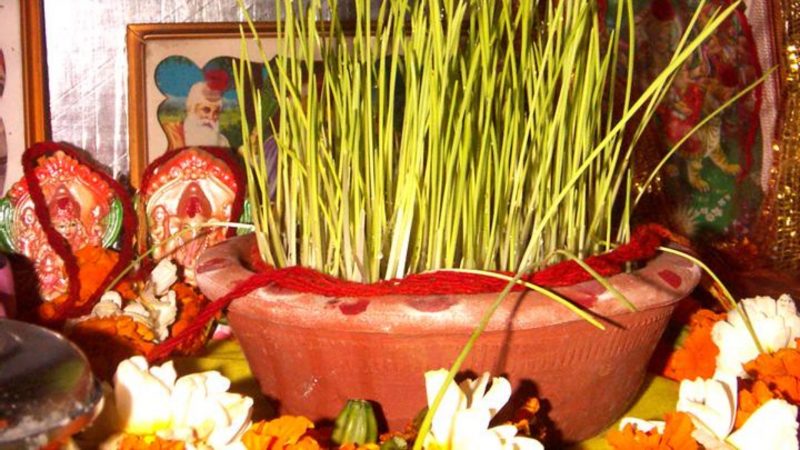
During Navratri, growing Khetri or barley seeds is a practice that represents growth, wealth, and abundance. Growing Khetri is thought to have begun in ancient India when farmers would scatter barley seeds in their fields to request the Goddess’ blessings for a bountiful crop.
This custom is still practised in many regions of India today, with families and communities taking part in the ritual of cultivating Khetri during Navratri. Throughout the nine days, the barley seeds are fed and cared for, and it is thought that the growth of the seeds reflects the increase in wealth, happiness, and success in the family.
On the final day of Navratri, the Khetri is carried to a local river or stream and submerged in the water, which is thought to unleash the Goddess’ energies and blessings into the environment. Alternatively, the Khetri can be put under a Peepal tree, which is revered in Hinduism.
Growing Khetri during Navratri is not just a method to seek the Goddess’ blessings, but also a way to connect with nature and celebrate life’s prosperity. It’s a lovely approach to respect the Hindu philosophy’s emphasis on the cycle of development and rejuvenation.
Fasting For Navratri 2024
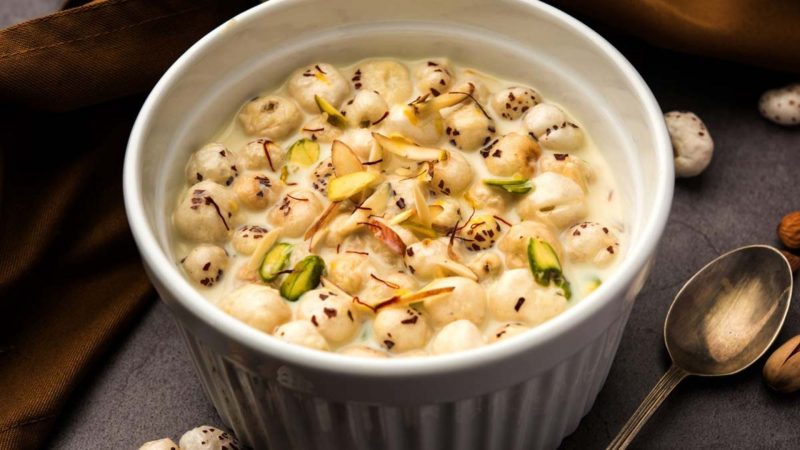

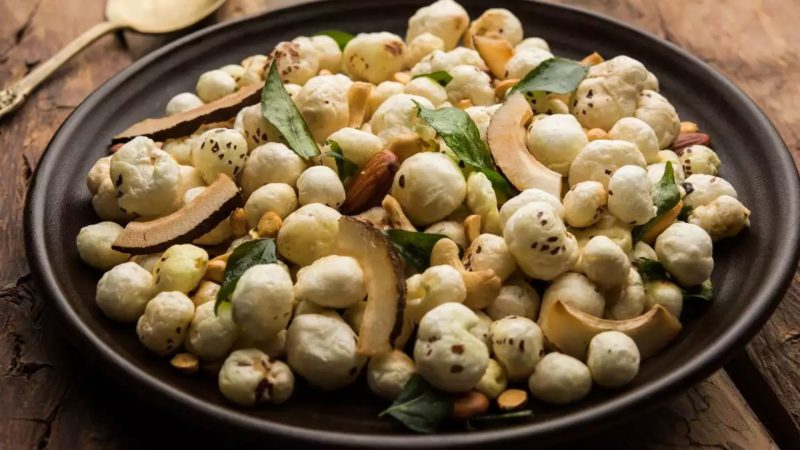
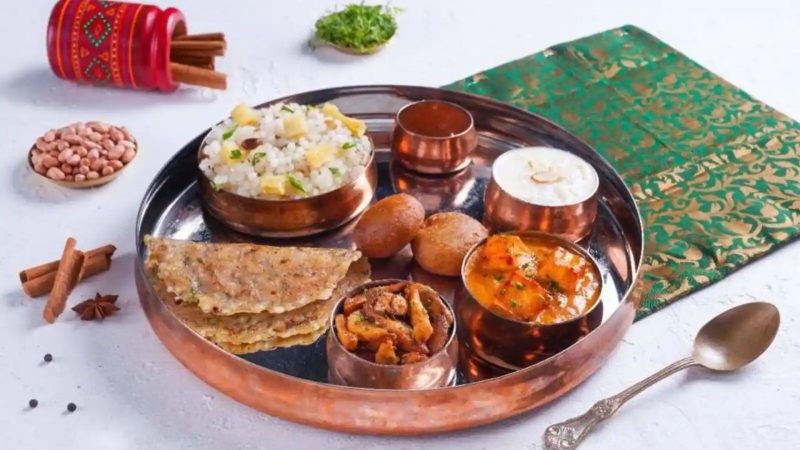
Navratri, the goddess Durga’s festival, is observed with tremendous devotion, and fasting is an important part of this nine-day holiday. Fasting is not done to please the goddess, but to purify the mind, body, and soul.
According to Ayurveda, fasting allows the abdomen to remain empty, which produces more jatharagni, or digestive fire, which eliminates impurities from the body. This leads to a more relaxed mind, higher attention, and greater mental power.
Full Fasting
During full fasting, a person does not eat anything for the whole nine-day celebration. At the time of full fasting, people only drink water. The fast is broken on the tenth day following a puja (prayer) and the distribution of food to young girls (Kanya Pujan).
Partial Fasting
During a partial fast, permissible foods such as fruits, sabudana, rajgira, kutta ka atta, dairy, and nuts can be consumed during the day, with a one-time meal at night. It is critical to drink water throughout the fast, and coconut water, buttermilk, lemon juice, and other liquids can be consumed to avoid dehydration and weakness.
It is customary to present whatever meal is made to the deities before sharing it as Prasadam. It is critical to keep the home clean at all times, as a clean home is said to attract the Goddess’s blessings. At this time, avoid consuming alcohol, drugs, eggs, non-vegetarian cuisine, onions, and garlic.
When Is It Permissible To Break The Fast?
Navratri is not only a time for celebration and festivals, but it is also a time of spiritual importance for families throughout northern India. The Navratri seven-day fast, known as Navratri Parana, is a popular Hindu custom. Some people prefer to fast solely on particular days, while others fast throughout the festival.
Breaking the fast after Kanya Puja is a frequent practice, however, it is crucial to note that if you follow this custom, there is no need to look for the Navratri Parana Muhurat. Fasting during Navratri is said to bring spiritual purity and blessings from Goddess Durga, and many individuals prefer to offer food or money to the poor during this time as a form of charity and to seek the goddess’s blessings.
Kanya Pujan
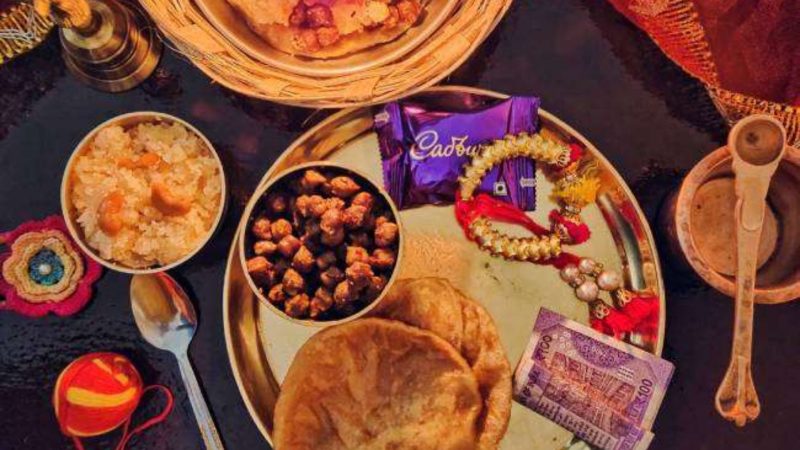
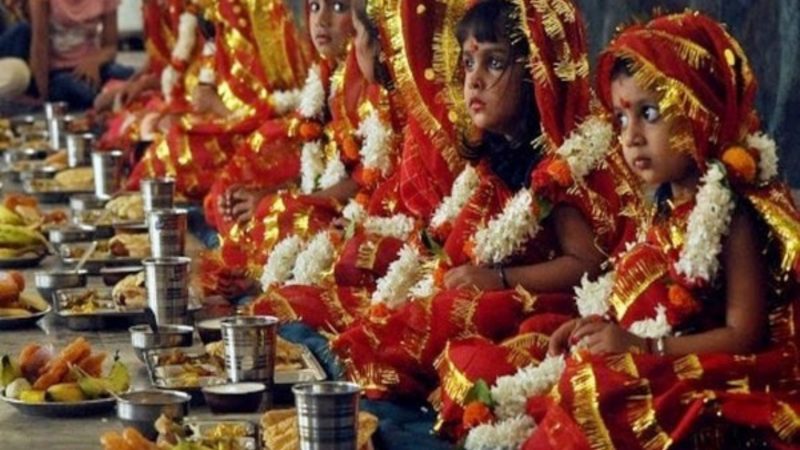
Families invite young girls to their homes during Navratri and worship them as nine goddesses or nine manifestations of Goddess Shakti. This age-old ritual, known as Nav Kanya Puja, is revered for its capacity to appease Goddess Durga.
The theory underlying this practice is that the feminine gender symbolizes the prime spirit of creation, and these girls represent the very first power that inspired the formation of the universe and the gods, deserving of the greatest respect.
At Kanya Puja, the girls’ feet are washed, a red mauli is tied around their hands, and a tilak is applied to their forehead. Afterwards, they pray and distribute prasadam, which includes puri, dry black chana, and halwa. Some households also invite and worship a boy of the same age as Bhairava’s form (Shiva). The coconut stored at the altar is broken open and distributed to the females as prasadam.
This event, also known as Maha Ashtami Kumari Puja is very important during the Navratri celebrations. Kanya Puja is thought to assist one in acquiring the blessings of Goddess Durga and recognize the feminine strength given to the female child. Furthermore, any offerings given to the goddess throughout the nine days are offered to her.
Also Read: Navratri – A Festival Of Devotion
